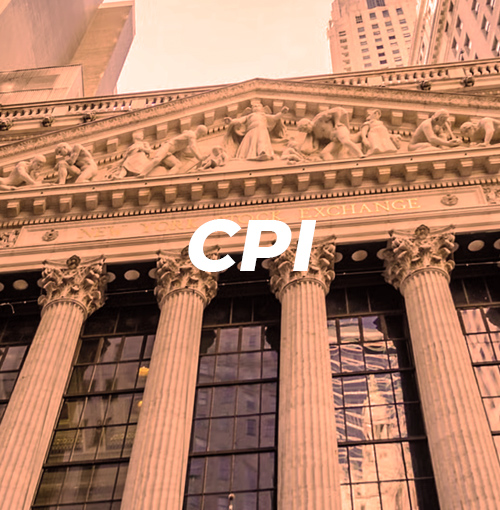
Inflation Explained: What It Is and How It Can Be Controlled
The financial landscape is often fraught with complexities, and among the most puzzling is inflation. A phenomenon with global implications, inflation is crucial to grasp for those interested in economics, finance, or merely understanding their purchasing power. This article will shed light on the intricacies of inflation, how it is measured and managed, and delve into the different types that may occur. Additionally, it will showcase some extreme instances of inflation from global history.
A Primer on Inflation
Simply put, inflation is a gradual surge in the prices of goods and services, resulting in the depreciation of the currency's purchasing power. The pace at which the purchasing power deteriorates is typically reflected in the average price augmentation of a selected array of goods and services over a specified duration. When expressed as a percentage, it indicates that a unit of currency now fetches lesser than what it could in previous periods. The opposite of inflation is deflation, which transpires when prices decrease, enhancing purchasing power.
Key Points:
Inflation signifies the increasing rate at which prices for goods and services escalate.
There are three primary categories of inflation: demand-pull inflation, cost-push inflation, and built-in inflation.
The inflation indexes widely utilized include the Consumer Price Index and the Wholesale Price Index.
Perspectives on inflation can vary, with it being viewed as a boon or a bane depending on personal circumstances and the rate of change.
Individuals with tangible assets like property or commodities may welcome some inflation as it amplifies the worth of their assets.
Decoding Inflation
While tracking price modifications of individual items over time can be straightforward, human requirements stretch beyond one or two products. For a comfortable life, individuals necessitate a vast and diverse assortment of products, including essentials like food grains, fuel, metal, along with utilities such as electricity and transportation, and services like healthcare and entertainment.
Inflation endeavors to gauge the cumulative effect of price changes for such a varied array of goods and services. It offers a singular numeric representation of the escalation in the price level of goods and services in an economy over time.
The general public's cost of living is directly influenced by the surge in prices, as it undermines the purchasing power of money, which in turn could decelerate economic growth. The predominant viewpoint among economists is that persistent inflation occurs when a country's money supply growth outstrips economic growth.
Important: Persistent inflation typically occurs when a country's money supply growth exceeds economic growth.
The Genesis of Inflation
Inflation's root lies in an increment in the money supply, which can be manifested through diverse mechanisms in the economy. A nation's money supply can be augmented by the monetary authorities via:
- Printing and disbursing more money to its citizens.
- Legally devaluing (diminishing the value of) the legal tender currency.
- Lending new money into existence as reserve account credits through the banking system by purchasing government bonds from banks on the secondary market (the most prevalent method).
In each of these scenarios, the currency ends up losing its purchasing power. The ways through which this drives inflation can be grouped into three types: demand-pull inflation, cost-push inflation, and built-in inflation.
Interesting Fact: Historically, devaluation of currency was one of the ways to increase money supply leading to inflation.
Demand-Pull Inflation
When an increase in the money and credit supply kindles the overall demand for goods and services to surge more rapidly than the economy's production capacity, demand-pull inflation arises. This demand spike prompts prices to soar.
When individuals have more money, they are likely to feel positive and spend more, thereby pulling prices higher. It engenders a demand-supply gap, with elevated demand and less flexible supply, resulting in higher prices.
Cost-Push Inflation
Cost-push inflation is a consequence of price augmentations permeating through the production process inputs. When money and credit supply additions are channeled into a commodity or other asset markets, costs for all kinds of intermediate goods rise. This is particularly evident when a negative economic shock to the supply of key commodities occurs.
This situation culminates in higher costs for the finished product or service, leading to rising consumer prices. For instance, when the money supply is expanded, it creates a speculative boom in oil prices, causing energy costs to increase. This can contribute to rising consumer prices, which is reflected in various measures of inflation.
Built-In Inflation
Built-in inflation is connected to adaptive expectations - the notion that people anticipate current inflation rates to persist in the future. As the prices of goods and services increase, people may expect a continuous rise in the future at a similar rate. Consequently, workers may demand higher wages to sustain their standard of living. Their increased wages result in a higher cost of goods and services, triggering a wage-price spiral that continues as one factor induces the other.
Understanding Price Indexes
Depending on the selected set of goods and services used, various baskets of goods are computed and tracked as price indexes. The most commonly used price indexes are the Consumer Price Index (CPI) and the Wholesale Price Index (WPI).
Tip: Get familiar with the terms CPI, WPI, and PPI, and understand their implications.
Consumer Price Index (CPI)
The CPI is a measure that scrutinizes the weighted average of prices of a basket of goods and services, primarily catering to consumer needs, including transportation, food, and medical care.
CPI is calculated by taking price changes for each item in the predetermined basket of goods and averaging them based on their relative weight in the entire basket. The prices under consideration are the retail prices of each item, as available for purchase by individual citizens.
Changes in the CPI are used to assess price changes associated with the cost of living, making it one of the most frequently used statistics for identifying periods of inflation or deflation. In the U.S., the Bureau of Labor Statistics (BLS) reports the CPI on a monthly basis and has calculated it as far back as 1913.
Wholesale Price Index (WPI)
Another popular measure of inflation is the WPI. It measures and tracks changes in the price of goods at stages before the retail level.
While WPI items can differ from one country to another, they mainly include items at the producer or wholesale level. For instance, it includes cotton prices for raw cotton, cotton yarn, cotton gray goods, and cotton clothing.
Although many countries and organizations use WPI, many others, including the U.S., use a similar variant called the producer price index (PPI).
Producer Price Index (PPI)
The PPI is a collection of indexes that measures the average change in selling prices received by domestic producers of goods and services over time. The PPI gauges price changes from the seller's perspective, contrasting with the CPI, which measures price changes from the buyer's viewpoint.
In all variants, it's possible that the rise in the price of one component (say oil) neutralizes the price decline in another (say wheat) to a certain extent. Overall, each index represents the average weighted price change for the given constituents, applicable at the overall economy, sector, or commodity level.
Interesting Fact: The U.S. Bureau of Labor Statistics (BLS) has calculated the CPI as far back as 1913.
How to Measure Inflation
Price index variants like the ones mentioned above can be used to compute the value of inflation between two specific months (or years). While numerous ready-made inflation calculators are accessible on various financial portals and websites, understanding the underlying methodology is crucial for ensuring accuracy. The mathematical formula for calculating the inflation rate is:
Percent Inflation Rate = (Final CPI Index Value ÷ Initial CPI Value) x 100
For example, to determine how the purchasing power of $10,000 altered between September 1975 and September 2018, one can locate the price index data on various portals in tabular form. From that table,Using the above formula, Percent Inflation Rate = (252.439 ÷ 54.6) x 100 = 462.14%. The initial $10,000 has inflated to $46,214, which is the amount you would need in September 2018 to purchase the same basket of goods and services that $10,000 could buy in September 1975.
Inflation doesn't affect everything equally. For instance, prices of things like new cars, computers, and many electronics have actually decreased over time, relative to the overall inflation rate.
Controlling Inflation
As stated above, inflation is primarily controlled by the central bank of a country and its monetary policy. According to the International Monetary Fund (IMF), the central banks of over 90% of the world's advanced economies are committed to clearly established (or mandated) inflation targets.
Monetary policy tools include open market operations, central bank lending facilities, reserve requirements, and the setting of interest rates, including that of the benchmark federal funds rate.
Important: Inflation is primarily controlled by the central bank of a country through its monetary policy.
A central bank might, for example, reduce the money supply and raise interest rates to tighten the monetary base and stem inflation. Conversely, it might increase money supply and lower interest rates to stimulate economic growth and reduce unemployment, even at the risk of higher inflation.
Many governments have enacted policies such as wage and price controls to fight inflation, often with limited success.
Remember: Policies such as wage and price controls have been implemented to combat inflation, often with limited success.
Extreme Examples of Inflation
Hyperinflation is when the prices of goods and services rise more than 50% a month. At that pace, a loaf of bread could cost one amount in the morning and a higher one in the afternoon.
The most famous example of hyperinflation is modern Zimbabwe. In November 2008, its inflation reached an astronomical 89.7 sextillion percent a month. The government then declared inflation illegal. In 2009, it abandoned its currency. At that time, 1 U.S. dollar was worth 35 quadrillion Zimbabwean dollars.
Interesting Fact: At the peak of Zimbabwe's inflation, 1 U.S. dollar was worth 35 quadrillion Zimbabwean dollars.
Another famous example of hyperinflation was in post-World War I Germany. The Treaty of Versailles imposed steep reparations on Germany. The government then printed more money to pay the debt. That led to inflation, but people's wages didn't keep up. By November 1923, the hyperinflation rate was 3.25 billion percent per month.
The fear of hyperinflation often limits governments from issuing new money during a recession, even when the threat of deflation is greater. Deflation is a decrease in the general price level of goods and services. It can also lead to a deflationary spiral.
Tip: Extreme inflation is a red flag indicating economic instability; it can affect investment decisions.
- Share this article





